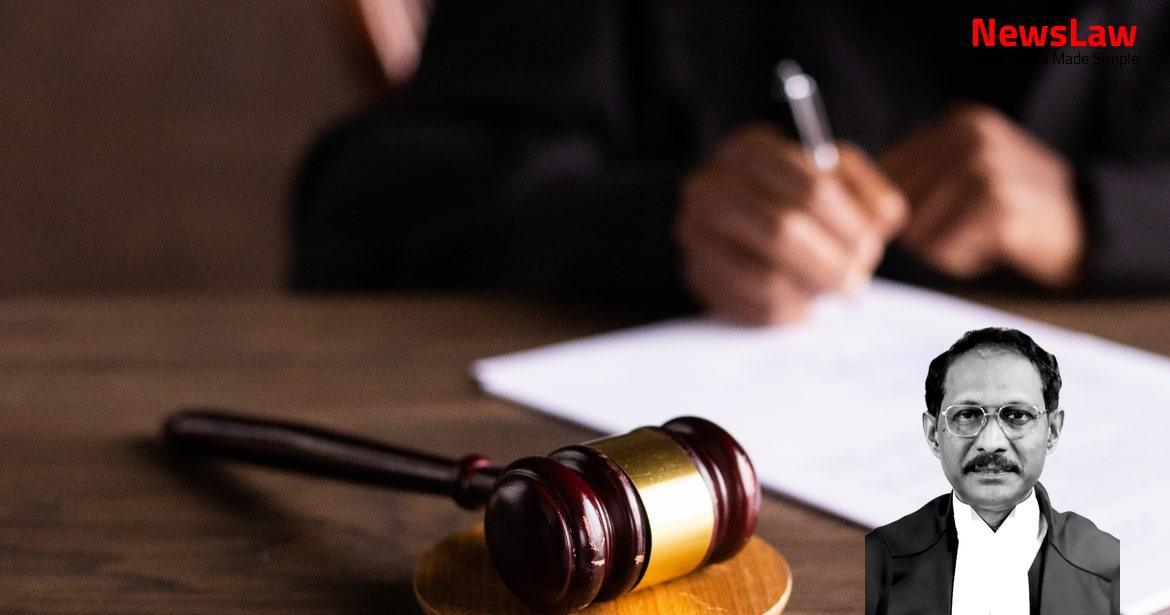Explore the comprehensive legal analysis by the court on the land acquisition notification process, emphasizing procedural flaws, environmental impact assessments, and policy adherence. This summary sheds light on the court’s scrutiny of decisions related to national highway development, highlighting the significance of fair policy implementation and environmental clearances in such projects.
Facts
- The appeals emanate from the judgment of the High Court of Madras declaring notifications for acquisition of lands for the Chennai-Krishnagiri-Salem National Highway as illegal.
- Notifications under Section 2(2) of the National Highways Act declared stretches as NH-179A and NH-179B.
- Phase I of the project includes 24,800 kms of road works along with 10,000 kms under the NHDP.
- The total outlay for Phase I is Rs. 5,35,000 crores spread over 5 years.
- The Program focuses on efficient highway development and optimal resource allocation.
- Notifications under Section 3A of the Act were challenged by affected landowners.
- The Program aims to improve corridor approach over package-based development to enhance freight and passenger movement efficiency.
- The High Court noted that the decision was taken hastily without following necessary procedures and exploring alternatives.
- It observed that challenging land acquisition processes at the inception is usually avoided but warranted in this case.
- The High Court raised concerns about the appointment of the Consultant for a different stretch than initially conceived without proper justification.
- It highlighted the lack of data collection and impact assessment for the changed project stretch.
- The Court criticized the unauthorized felling of trees and failure to obtain permissions from the Forest Department.
- It rejected the argument that no other bidder challenged the Consultant’s appointment for the changed stretch.
- The High Court found no evidence to support the allegations of a hidden agenda favoring a private company.
- It emphasized the importance of obtaining required environmental and forest clearances for the project.
- The Court concluded that the project was flawed on various grounds and recommended quashing the land acquisition notifications.
- The decision was based on a report prepared without physical verification on site, indicating procedural deficiencies.
Also Read: Legal Analysis on Diplomatic Immunity Exception Case
Issue
- The High Court addressed the preliminary objection raised by NHAI and the Union of India regarding the maintainability of the writ petitions being premature.
- The notifications under Section 3A(1) were considered as an expression of intention to acquire lands, and objections could be raised and considered by the designated authority at the appropriate stage.
Also Read: Autonomy of Private Unaided Schools in Fee Determination
Arguments
- Before acquisition of lands for development, the adverse impacts on the environment must be properly understood.
- The existing routes between Chennai-Salem were deemed sufficient, making a new project unnecessary.
- Issuance of Notification under Section 3A of the Act only conveyed the government’s intention to acquire lands.
- Lands entered temporarily would revert back if excluded from the project.
- No existing, approved, or proposed industrial zones/SEZs along the route as per Government data.
- No empirical data to support the change in the minutes of the meeting proposing a new national highway.
- The notifications declaring new national highways were argued to be without legal authority as they traverse non-existent roads and green-field lands.
- The petitioners argue that the change of section in the highway project was hasty and lacked tangible basis and support from required data.
- They point out that the decision to change the section was arbitrary and violated constitutional provisions related to legislative and executive powers.
- The petitioners stress the importance of prior environmental clearances before the acquisition process begins.
- They mention flaws in the appointment of the Consultant for the project section and highlight inaccuracies in the submitted Detailed Project Report (DPR).
- The argument emphasizes the impact of the new section on agricultural land and the environment without providing tangible benefits to the affected landowners.
- The petitioners assert that the environmental clearance and acquisition processes should be distinct and independent, with clearances obtained before notifications under the National Highways Act.
- They question the legitimacy of the changed section being approved without proper authority and stress the need for strong evidence to justify such changes.
- The petitioners advocate for a proper appraisal process and adherence to environmental guidelines before initiating acquisition and construction activities.
Also Read: Land Ownership Dispute Legal Analysis
Analysis
- The High Court emphasized the importance of fair and known policy decisions regarding land acquisition.
- It was noted that prior environmental clearance should have been obtained before issuing notifications for land acquisition.
- The obligation not to act arbitrarily and to treat employees equally is binding on the Union of India under the Constitution.
- The definition of a highway, public trust doctrine, and powers of the Government under the Act were discussed.
- The importance of adhering to policy guidelines for delegated legislation was highlighted.
- The Courts’ role in scrutinizing the exercise of power by authorities and ensuring public purpose were emphasized.
- The need for prior environmental clearance for projects affecting agriculture was underscored.
- The Central Government has the power to acquire land for the public purpose of building a national highway.
- The Central Government can appoint an arbitrator to determine the amount if parties do not agree on the compensation for the acquired land.
- NHAI (National Highway Authority of India) is an authority appointed by the Central Government under the 1988 Act.
- NHAI is responsible for developing, maintaining, and managing national highways.
- The Central Government has exclusive power to declare any stretch in any State to be a national highway.
- The Land Acquisition Act of 1894 does not apply to acquisitions under the National Highways Act.
- Prior environmental clearance is required for new projects before commencing construction activities.
- Public consultation is necessary for Category ‘A’ and Category ‘B1’ projects to address environmental concerns.
- Eminent domain allows the government to acquire land for public use, with fair compensation to the owners.
- The court has not expressed any opinion on the correctness or validity of permissions or clearances granted by competent authorities under environment and forest laws.
- Decisions in specific cases may be looked at only if the permissions/clearances are assailed.
- The court has not elaborated on other decisions mentioned by the parties’ counsel to avoid prolixity, as they are not relevant to the current issues.
- The appeals filed by the authorities should succeed based on the issues discussed in the judgment regarding notifications under the concerned sections of the 1956 Act.
- The court has not addressed the decisions suggesting potential environmental impacts of the project, as the focus has been on specific issues related to notifications.
- The efficacy of permissions/clearances granted under environment or forest laws has not been examined, allowing affected persons to challenge their validity in the appropriate forum.
- The court does not want to further discuss the authorities of the High Courts regarding the specific issues tackled in this judgement.
- Any High Court decision not in line with this judgement should be considered implicitly overruled.
Decision
- The appeals filed by the Union of India and NHAI are partly allowed, while the appeal filed by the land owner(s)/aggrieved party(ies) stands dismissed.
- The impugned judgment and order is modified as indicated in the judgment.
- The direction to restore the subject mutation entries is upheld.
- The Central Government and/or NHAI are permitted to proceed further for the acquisition of notified lands for construction of a national highway for the proposed section C-K-S (NC), being NH Nos. 179A and 179B.
- There shall be no order as to costs.
- Pending interlocutory applications, if any, shall stand disposed of.
Case Title: THE PROJECT DIRECTOR PROJECT IMPLEMENTATION UNIT Vs. P.V. KRISHNAMOORTHY (2020 INSC 688)
Case Number: C.A. No.-003976-003977 / 2020



